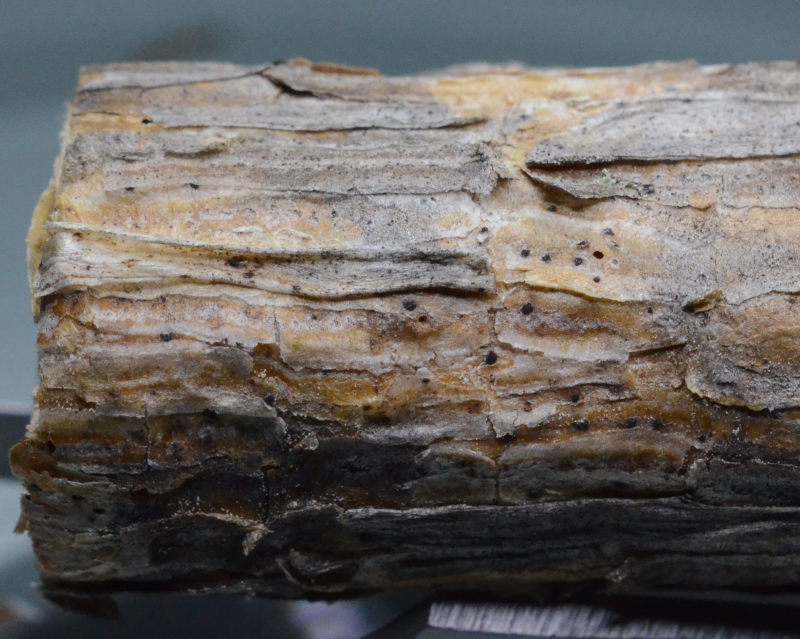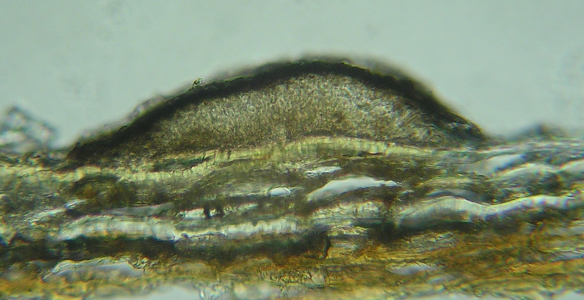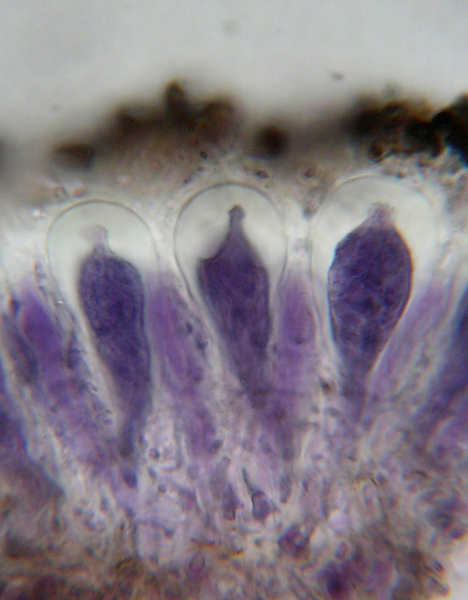Home >> Diversity and classification >> True fungi >> Dikarya >> Ascomycota >> Pyrenomycetes >> Dothideomycetes >> Arthoniales
THE ARTHONIALES
The order Arthoniales is slightly misplaced in the Dothideomyces. Newer systems of classification place it within its own class, the Arthoniomycetes. However, the Arthoniomycetes are closely related to the Dothideomycetes and, for convenience, are lumped in with them here. They are recognized by their ascomata, which are often rather irregular in shape and flattened. The ascomata have neither a pore-like opening nor do they open out like a discomycete. Instead the hyphae of the hamathecium branch out to form a dark and densely interwoven covering called an epithecium that covers the single layer of asci. The asci range from nearly spherical to balloon-like and have very thick walls.
Many, or maybe most, members of the Arthoniales are lichen-forming or are parasites on other lichens. You might be tempted to classify them among the lichen-forming Discomycetes, but they are not closely related to that group.


The picture at far left is of a small dead branch of a jack pine with small black ascomata of an as-yet-unidentified Arthonia species growing in regions of the bark that appear to be bleached. The picture above right is a cross section of one of those ascomata showing the nearly colourless hymenium of asci covered by the very dark epithecium

The photo at left is at a higher magnification and shows the characteristic asci, with their balloon-like shape and very thick walls. The asci here were stained with Shear's Mounting medium with Ink Blue dye. The ascospores in this collection had two cells, but other species may have four or even six.